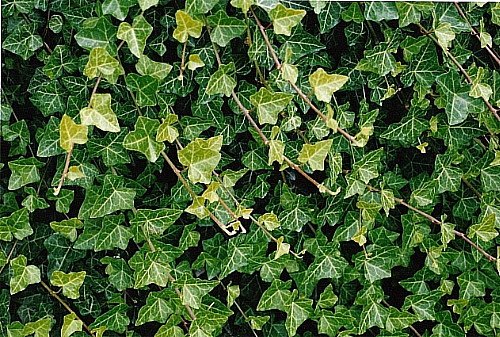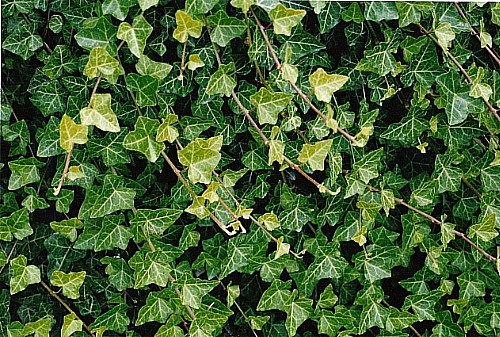If you’re looking for an aesthetically-pleasing and practical way to beautify your garden, ivy is the perfect choice as a ground cover. Not only does it give your outdoor space an elegant and natural touch, but it also offers shade and reduces the chances of soil erosion. However, before buying ivy plants, there are some factors you need to consider, to ensure that it will thrive in your garden.
One of the most important factors to consider is the amount of sunlight that your garden receives. While ivy thrives in partially shaded areas, it also requires a fair amount of sun to grow properly. Another factor is the type of soil in your garden. Ivy prefers fertile, well-drained soil, and may not survive in heavy, clay-like soil. You should also consider the climate in your area and if it’s compatible with ivy.
Would you like to have a garden that’s both visually pleasing and practical? Do you want to save time and effort in maintaining your outdoor space? If so, ivy is the perfect solution for you. Imagine having a garden that offers shade and protection, while maintaining its natural beauty. If you’re curious to learn more about ivy ground cover, keep reading to discover more about the benefits, the maintenance, and how to choose the right ivy for your garden.
10 Best Ivy For Ground Cover
| # | Product Image | Product Name | Product Notes | Check Price |
|---|---|---|---|---|
|
1
|
This product is ideal for ground-covering and landscaping purposes.
|
|
||
|
2
|
Hirt's Baltic English Ivy is ideal for use as a hardy groundcover in landscaping projects.
|
|
||
|
3
|
The product is ideal for covering ground and vertical spaces with a fast-growing, low-maintenance plant.
|
|
||
|
4
|
This product is ideal for ground cover, as it is a flowering perennial that can be used to decorate outdoor spaces.
|
|
||
|
5
|
The product is ideal for use as a hardy groundcover.
|
|
||
|
6
|
The product is ideal for groundcover due to its hardiness and ability to quickly spread and fill in spaces.
|
|
||
|
7
|
Ideal for groundcover as it is a hardy English Ivy plant.
|
|
||
|
8
|
Ideal groundcover for shaded areas, erosion control, and enhancing aesthetic appeal.
|
|
||
|
9
|
This product is ideal for providing shade-tolerant, cascading ground cover and has 8000 seeds.
|
|
||
|
10
|
It is ideal for use as a hardy groundcover plant in various outdoor settings.
|
|
1. Greenwood Ivy: 200 Root Bundle
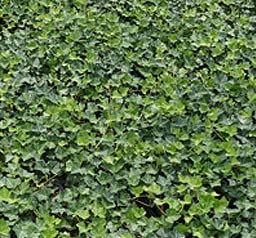
English Ivy is an evergreen climbing vine that can also be used as groundcover plants. It has dark green, glossy leaves and can grow up to 8-10 inches on the ground and up to 9 feet as a vine. This fast-growing and relatively pest-free plant is an excellent low-maintenance lawn substitute that requires little care once established. It is a hardy evergreen plant that is very cold hardy.
To create a carpet effect, plant English Ivy approximately 18 inches apart. For larger areas, bare root plants can be planted, which can save money. 100 plants can cover a 225 square foot area.
This groundcover plant is categorized as an evergreen perennial that requires full sun to partial light and moist soil. It can grow up to 6-10 feet tall and has a fast growth rate. It can be planted in planting zones 3-9.
Greenwood Nursery takes the utmost care to ensure that all plants are healthy, vibrant, and alive when they arrive. Bare root plants are covered with hydrating gel, wrapped in moist paper, and placed in an airtight plastic wrap to trap moisture. Potted plants are shrink-wrapped and taped to prevent soil from spilling out. Both types of plants are secured in a box with shipping peanuts. Most orders are shipped the next business day.
Greenwood Nursery strives to satisfy every customer with their purchase. If there are any issues with the order, customers should immediately contact the store to have them corrected. To avoid any issues, customers should make sure they are purchasing from the Greenwood Nursery store. The package will have the store's logo around the plant and on the box.
- Fast-growing and relatively pest-free
- Excellent low-maintenance lawn substitute
- Very cold hardy
- Can be used as groundcover or climbing vine
- – Can become invasive if not properly maintained
2. 20 Virginia Creeper Ivy Plants Vine, Ivy Ground Cover Bare Roots
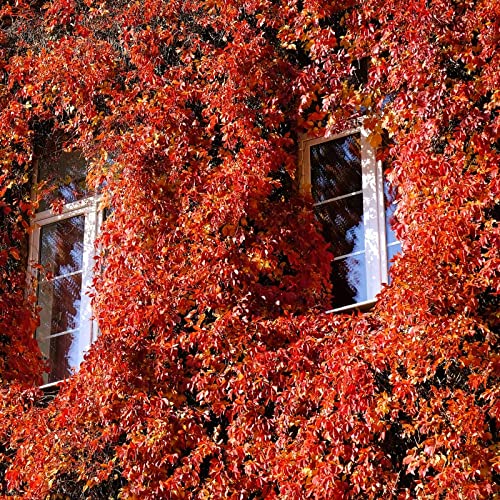
Add a touch of greenery to any outdoor space with these 20 Virginia Creeper Ivy Plants Vines. These bare-root plants are perfect for covering walls, fences, or any other vertical surface. With a mature height of up to 50 feet, these vines are sure to create a lush and vibrant atmosphere in your garden or yard.
The Virginia Creeper Ivy Plant is known for its hardiness and adaptability to a variety of climates. It can thrive in both sun and shade, and is resistant to pests and disease. The plant features striking five-lobed leaves that turn a beautiful red in the fall, adding a pop of color to your outdoor space.
Planting these bare-root ivy plants is easy and straightforward. Simply plant them in well-draining soil and water them regularly. With proper care, these plants will quickly establish themselves and begin to grow vigorously.
Whether you're a seasoned gardener or just starting out, these Virginia Creeper Ivy Plants Vines are a great addition to any outdoor space. Order now and enjoy the beauty and benefits of these hardy and versatile plants.
- 20 Virginia Creeper Ivy Plants Vines included for ample coverage
- Hardy and adaptable to a variety of climates
- Resistant to pests and disease
- Features striking five-lobed leaves that turn red in the fall
- Easy to plant and care for
- – May require pruning to prevent overgrowth
- – Can be invasive if not properly managed
3. Virginia Creeper Perennial Ground Cover – 20 Plants
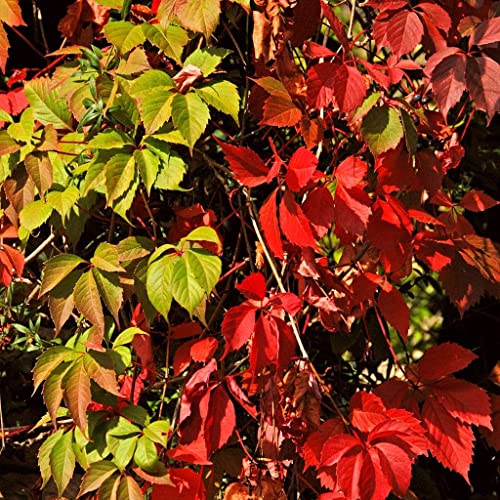
Introducing the Virginia Creeper Plant, a perennial flowering plant that is perfect for ground cover. This package contains 20 live plants with bare roots that are ready to be planted. With its scientific name Parthenocissus quinquefolia, this vine is also commonly referred to as Virginia Creeper Vine.
The Virginia Creeper Plant is a fast-growing vine that can grow up to 10 feet in a single year, making it an ideal choice for covering large areas in a short amount of time. This plant is hardy in Zones 3-10, meaning it can thrive in various climates across the United States.
This plant can produce clusters of small green flowers that will eventually turn into small blue-black berries. The Virginia Creeper Plant is also known for its stunning fall foliage, with its leaves turning from green to shades of red, orange, and purple.
Overall, the Virginia Creeper Plant is a low-maintenance ground cover option that can add beauty and color to any garden or landscape. Plant these bare roots in a sunny or partially shaded location with well-drained soil, and watch them grow!
- 20 live plants with bare roots for immediate planting
- Fast-growing vine that can cover large areas quickly
- Produces small green flowers and blue-black berries
- Stunning fall foliage with colorful leaves
- – May be invasive in some areas
- – Can attach to and damage structures if not properly maintained
4. Jmbamboo – Baltic English Ivy 8 Plants – Hardy Groundcover – 2 1/4" Pot
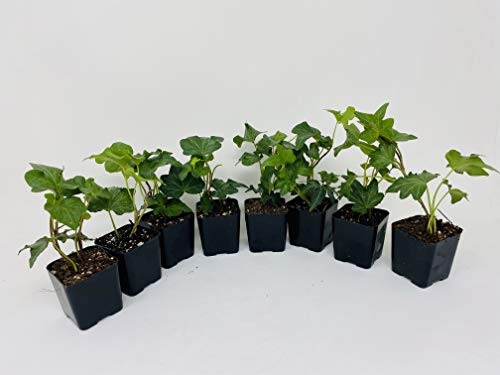
The Hedera helix 'Baltic' is a popular English Ivy species known for its hardiness and resilience. It can thrive in zones 4-8, making it an excellent choice for those living in colder climates. This plant is also deer resistant, making it an ideal option for gardeners who struggle with deer damage. It can grow in both sun and shade, providing versatility in placement options.
The Hedera helix 'Baltic' is considered the hardiest English Ivy, making it a reliable option for gardeners. The plants are grown in 2.25" pots, ensuring their roots are well-established before transplanting. The plants will arrive healthy and ready to be transplanted into your garden.
- Hardy in zones 4-8
- Deer resistant
- Can grow in sun or shade
- Considered the hardiest English Ivy
- Plants are grown in 2.25" pots for well-established roots
5. 9greenbox Baltic English Ivy 8 Plants – Hardy Groundcover -1 3/4" Pots
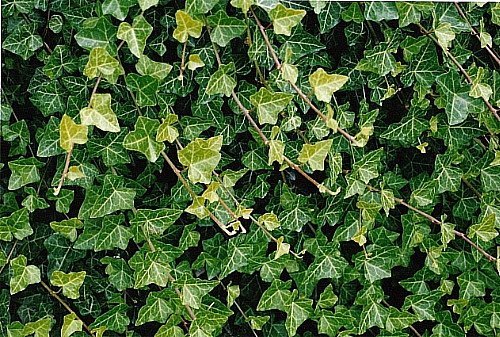
English Ivy Plants, also known as woody vines, are evergreen perennials that add charm to any garden. This plant is ideal for covering the ground, as it spreads horizontally and can reach a height of 8 inches. It can also climb up to 80 feet, making it the perfect fence cover.
This plant is an aggressive grower and can spread quickly without proper care and maintenance. It requires part shade to full shade and loves fertile and moist soil with a pH level of neutral to slightly alkaline. It is important to let the soil dry out before watering the plant again.
English Ivy does well planted in containers or baskets, making it a great hanging plant for both indoor and outdoor spaces. However, it needs protection from winter winds as well as the hot summer sun. The bloom time is usually during the fall with greenish-white or greenish-yellow flowers.
To keep it manageable, it is recommended to trim the ground cover plants in the springtime. Feed English Ivy every two weeks in the spring and summer seasons. It is a hardy plant that grows well in zones 4-9 USDA. Please note that images are for reference only and are of mature plants. In winter, all plants will ship dormant without leaves.
- Ideal for covering the ground and climbing fences
- Can grow up to 80 feet tall
- Great for both indoor and outdoor spaces
- Hardy plant that grows well in zones 4-9 USDA
- – Can spread quickly without proper care and maintenance
- – Needs protection from winter winds and hot summer sun
6. Thorndale English Ivy 48 Plants – Hardy Groundcover – 1 3/4" Pots
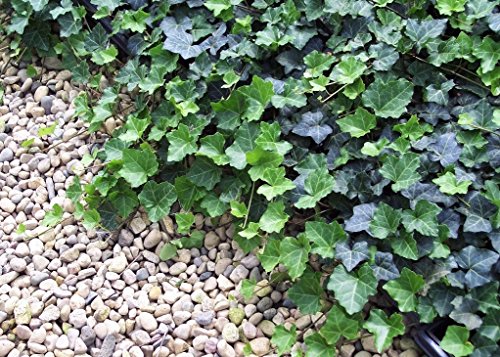
Looking for a versatile plant that can survive harsh conditions? Look no further than Hedera helix 'Thorndale', the hardiest English Ivy. This plant is able to thrive in zones 4-8 and is resistant to deer. It can be grown in both sun or shade, making it an ideal choice for a variety of landscapes. Whether you're looking to add some greenery to your garden or need a plant that can withstand harsh weather, Hedera helix 'Thorndale' is the perfect choice.
This plant is available for immediate shipping in 48 cell flats, making it easy to get started on your gardening project right away. If you're ordering during the winter months, please note that the plants will be shipped dormant.
With its hardiness and adaptability, Hedera helix 'Thorndale' is a great choice for anyone looking for a low-maintenance, yet beautiful plant.
- Hardy in zones 4-8
- Deer resistant
- Grows in sun or shade
- Considered the hardiest English Ivy
- Available for immediate shipping in 48 cell flats
- – None
7. Cascading Kenilworth: Shade Tolerant Ground Cover
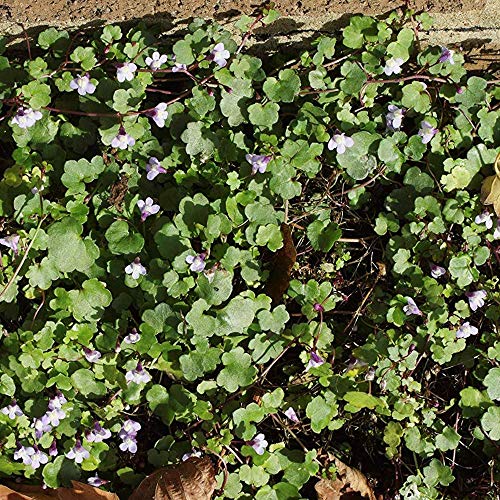
Kenilworth Ivy, also known as Cymbalaria Muralis, is a charming ground cover plant that can be grown from seed. With its scalloped leaves and pretty lilac-colored blooms, it can add a touch of elegance to any garden. This ground cover thrives even in full shade and is perfect for cascading down stone walls or spilling over the sides of containers.
Apart from being a great ground cover plant, Kenilworth Ivy also makes for a charming hanging basket. This trailing vine requires minimal maintenance, with regular watering and occasional cutting back and deadheading before setting seeds. However, it is a prolific self-sower and can spread its seeds all over the garden. To keep it contained, deadheading is recommended.
Sowing Kenilworth Ivy seeds indoors is recommended 10 weeks before the last frost is expected. Start by using starter trays and sprinkle the ground cover seeds on the surface of sterile soil. Gently press the seeds into the soil but do not cover them, as they require light to germinate. After the danger of frost has passed, transplant the young ground cover plants into the garden. Approximately 2000 seeds can cover 40 square feet of area.
- Kenilworth Ivy is a charming ground cover plant that can add elegance to any garden
- It thrives even in full shade and is perfect for cascading down stone walls or spilling over containers
- It requires minimal maintenance, with regular watering and occasional cutting back and deadheading before setting seeds
- – Kenilworth Ivy is a prolific self-sower and can spread its seeds all over the garden, making it difficult to contain without deadheading
Best Ivy For Ground Cover FAQs
Are there any downsides to using ivy as a ground cover?
Yes, there are some downsides to using ivy as a ground cover. While ivy may seem like an attractive and easy solution for covering bare ground, it can quickly become invasive and difficult to control. Ivy can spread rapidly and choke out other plants, leading to a loss of biodiversity in the area. It can also climb up trees and buildings, causing damage to structures and potentially creating a fire hazard. Additionally, ivy can harbor pests and diseases that can be harmful to other plants in the area. In some cases, ivy can also cause allergic reactions in people who come into contact with it. Therefore, it is important to carefully consider the potential drawbacks of using ivy as a ground cover before planting it in your yard or garden. Other options, such as native ground covers or mulch, may be more environmentally friendly and easier to maintain in the long run.
How do I care for ivy ground cover?
Ivy ground cover is a great way to add greenery and texture to your garden or landscape. However, it's important to know how to care for it properly to ensure that it grows and thrives. Here are some tips on caring for ivy ground cover:
1. Watering: Ivy ground cover needs to be watered regularly, especially during dry periods. Water deeply, but don't overwater as this can lead to root rot.
2. Fertilizing: Ivy ground cover doesn't need much fertilizer, but a light application of a balanced fertilizer in the spring can help encourage growth.
3. Pruning: Prune ivy ground cover regularly to keep it from becoming too thick and invasive. Trim back any dead or damaged stems and remove any growth that is creeping into areas where it's not wanted.
4. Soil: Ivy ground cover prefers well-draining soil that is rich in organic matter. If your soil is heavy or clay-like, amend it with compost to improve drainage.
5. Mulching: Mulching around the base of your ivy ground cover can help retain moisture and suppress weeds.
By following these simple tips, you can help ensure that your ivy ground cover stays healthy and vibrant year after year.
How do I plant ivy for ground cover?
To plant ivy for ground cover, you need to follow a few simple steps. First, choose the right location. Ivy thrives in areas with partial to full shade, and soil that is well-draining and slightly acidic. Next, prepare the soil by removing any weeds, rocks, or debris. Loosen the soil to a depth of 6 inches and mix in compost or other organic matter.
Once the soil is prepared, you can plant the ivy. Dig a hole that is slightly larger than the root ball of your ivy plant. Place the plant in the hole and backfill with soil, making sure to press the soil firmly around the roots. Water the ivy thoroughly after planting, and continue to water regularly until the plant is established.
To encourage your ivy to spread and fill in the space, you can train it to grow along the ground by gently bending the stems and securing them with stakes or rocks. You can also prune the ivy as needed to control its growth and shape.
Overall, planting ivy for ground cover is a great way to add greenery and texture to your landscape. With a little care and attention, your ivy will thrive and provide a beautiful, low-maintenance ground cover for years to come.
What are the benefits of using ivy as a ground cover?
Ivy is a popular ground cover plant that is widely used in landscaping and gardening due to its numerous benefits. One of the primary benefits of using ivy as a ground cover is its ability to control erosion on steep slopes and hillsides. It helps to stabilize the soil and prevent erosion by covering the ground with its dense foliage.
Another benefit of using ivy as a ground cover is its low maintenance and easy care requirements. Once established, ivy does not require frequent watering, fertilization, or pruning, making it an ideal choice for busy gardeners.
In addition, ivy is an excellent choice for shading and cooling outdoor areas such as patios, decks, and walkways. Its dense foliage provides a natural shade, reducing the amount of heat that is absorbed by the ground and surrounding surfaces.
Finally, ivy is an attractive and versatile plant that can be used to create a variety of landscape designs. It comes in different colors and varieties, making it easy to match with other plants and create a unique and beautiful garden.
What are the best types of ivy for ground cover?
When it comes to choosing ivy for ground cover, there are several types to consider. English ivy is a popular choice due to its ability to grow in most soil types and its attractive green leaves. Another great option is Algerian ivy, which has larger leaves and grows faster than English ivy. Additionally, Irish ivy is a great choice for shady areas and has a more delicate appearance than other types. Japanese ivy is also a good option, as it is drought-tolerant and grows well in both sun and shade. Finally, Persian ivy is a good choice for those looking for a unique look, as it has a distinct shape and grows well in both sun and shade. Ultimately, the best type of ivy for ground cover will depend on the specific growing conditions and the desired look of the garden or landscape.



